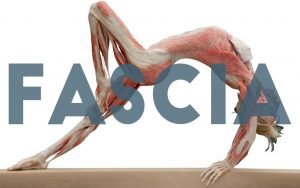SEARCH BLOG POSTS
Fascinating Facts About Fascia
 If you aren’t sure exactly what fascia does or know and facts about fascia, you’re not alone. Fascia is an intricate network of sheaths that surrounds all parts of the body, including organs, to help protect it. While many professionals that study the body often overlook this covering, there’s a lot of information today about how important it is. It aids in movement and lets the muscles move freely and allows them to slide against organs and other muscles smoothly, without causing damage. This soft connective tissue is everywhere in the body and surrounds all bones, muscle, organs and nerve fibers.
If you aren’t sure exactly what fascia does or know and facts about fascia, you’re not alone. Fascia is an intricate network of sheaths that surrounds all parts of the body, including organs, to help protect it. While many professionals that study the body often overlook this covering, there’s a lot of information today about how important it is. It aids in movement and lets the muscles move freely and allows them to slide against organs and other muscles smoothly, without causing damage. This soft connective tissue is everywhere in the body and surrounds all bones, muscle, organs and nerve fibers.
Fascia is a three-dimensional matrix.
While that might sound like it was taken from a sci-fi movie, it’s really simple to explain. There are trillions of cells in the body that work together to create the working machine we know. The fascia is what holds them together. It’s has a 3 dimensional spider web pattern to bind them together. The fibers act like the glue and provide stability while still allowing movement. It weaves itself through the body, not just outside the muscle tissue.
Your fascia is emotional.
There’s a belief that fascia holds onto emotional memory. If you hold in your emotions and don’t face them, it can cause changes in your posture. On the short term, it’s easy to see someone who has gone through the wringer by the way they slump as they walk. Emotional trauma can be locked into the fascia until it’s released and the emotion is faced. Many massage therapists find when they’re working with tight fascia, the client will suddenly have an emotional reaction and not know why. Upon reflection, it may be traced back to a powerful incident from the past. When you first feel a strong emotion, you feel it in your body. If you’re not ready to face it, the fascia lock it down and that’s how it all begins.
Fascia helps prevent injury to muscles and bones by transmitting force.
The perfect example of fascia at work is the trained athlete or stuntman that jumps from a second story building, rolls and runs. It’s more than just how he or she holds their muscles, it’s fascia at work. The muscles provide inner force and gravity, plus the ground are the external force, the fascial network, disperses the throughout the body, so it’s not all at one point. That minimizes the stress on one or two bones or muscles and spreads it to protect those bones or muscles.
- Repetition, including sitting, causes the fascia to stiffen at the line of stress. It also leaves it weaker in other directions. That can cause immobility of a joint or boost the potential for tears in the fascia.
- Fascia has the ability to contract, but there’s little understanding how the fascia manages to contract in concert with muscle contraction.
- Since fascia is a web of continuous coverage for bones, muscle and organs through many layers, it helps move the whole body seamlessly. It also means that whole-body movements during training will help maximize the functioning.
- You have ten times more sensory receptors in fascia as you do in muscle tissue. What may feel like a sore muscle may actually be sore fascia.
